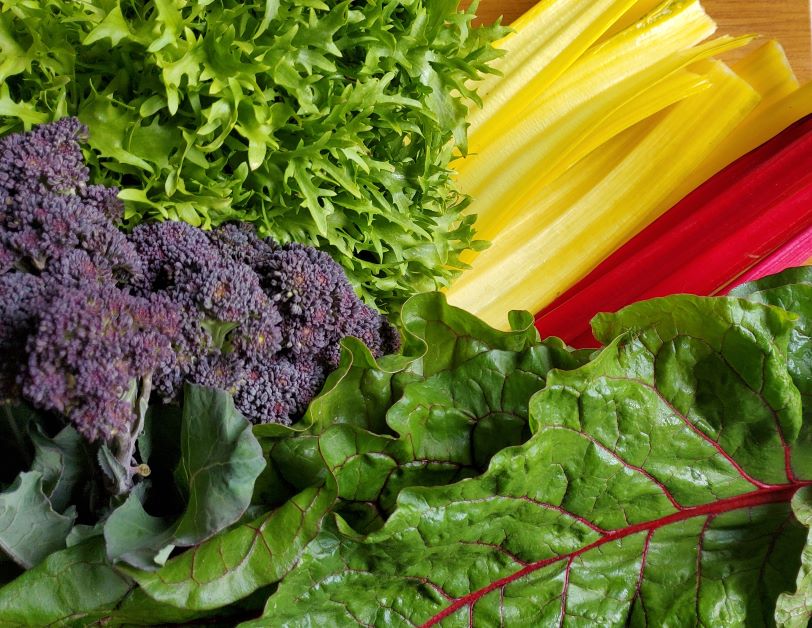
27 Apr 2023 Rtu Sandhi: Seasonal Transition (Spring to Summer Edition)
As a truly holistic science of health, Ayurveda recognizes that a person’s wellbeing can’t be separated from their environment, and that changes in the environment must necessitate changes in one’s daily habits.
This is readily apparent in the sometimes-tumultuous period between seasons. Called the Rtu Sandhi, or seasonal junction, the roughly two-week period of transition between one season and the next can be a tricky time for your body – you might find that your digestion, emotions, and your general sense of wellbeing feel as unpredictable as the weather. Here in western North Carolina, we’ve been seesawing between t-shirt & sandals weather one day and sweater & scarf the next. Our bodies aren’t immune from the effects of such fluctuations, and so the Rtu Sandhi can be a powerful tool. It is a time for gradually letting go of some of the habits of the previous season, while slowly introducing the day-to-day practices that will best support you in the months ahead.
We are fast approaching such a transition. Mid-May marks the move from Spring and its Kapha influence to Summer, marked by strong Pitta energy.
We are fast approaching such a transition. Mid-May marks the move from Spring and its Kapha influence to Summer, marked by strong Pitta energy. During the cooler months of Spring, you might have felt Kapha’s earthy pull in a desire to start working on some projects you dreamed up over the Winter, or in that itch to get some garden starts sprouted and ready for planting. You might have experienced Kapha’s watery side as a runny nose signaled that the cold, slow, heavy and sticky qualities that had built up during late Winter were melting away. Now, as the days get longer and sunnier, you might be beginning to feel Pitta’s touch. Maybe those extra hours of daylight make you want to say yes to too many things, and you’re beginning to get a bit overscheduled? Maybe you’re overly impatient and you’ve already put some of your garden plants outside, even though you know the danger of frost isn’t past? This is the shift from Spring to Summer, from Kapha influence to Pitta.
But, of course, Ayurveda is not so dualistic. While the qualities of each season can be represented by one dosha, it’s best to think of them as waves rising and falling throughout the course of the year, rather than switches that are turned on or off. So, while Kapha’s influence drops to its lowest during this time of year and Pitta’s rises to prominence, behind the scenes Vata is also active, slowly accumulating until it will become dominant in the Fall. Neither most nor least influential, you can nevertheless perceive Vata’s rise, particularly as the hottest, driest parts of the Summer draw out and the grass starts to turn brown and crispy.
Your particular constitution and circumstance plays a role in how much or how little these seasonal swings may impact you, and a trained Ayuvedic practitioner can bring depth and nuance to this dance, helping you further tailor seasonal habits to support your individual needs. But there are some universal principles that Ayurveda prescribes to support all humans during this period.

One basic concept to remember is that as heat goes up, agni – your digestive fire – goes down. Your body diverts resources to help cope with the increasing heat, and has less energy to spare for digestion. Support your agni with regular meals, and make lunch the main event. Ayurveda generally recommends cooked food to avoid overly taxing your digestive system. One exception is completely ripe fruit, so no need to grill that perfectly juicy watermelon that’s calling you on a hot day (though that would be delicious too!). You might, though, take a pass on the ice cream – iced and icy-cold food and beverages will further sap agni. Though it may seem obvious as you’re sweating through the high temperatures, remember to hydrate, hydrate, hydrate. And, as much as those late Summer sunsets might tempt you otherwise, maintaining a regular sleep schedule will help keep both Pitta and the seasonally ascendant Vata in balance.
If you find yourself feeling irritated, jealous, hangry, or hyper-competitive, these might be clues that you are experiencing the effects of excess Pitta. Ditto for skin and eye irritation, or acid reflux and other GI issues. A few remedies to keep in your back pocket for the months ahead:
- Plan a game night with friends or a play date with the littlest humans in your life. Cultivate a sense of light-hearted fun and creativity whenever you can. Bring a sense of play to your asana practice.
- Ayurveda identifies many cooling herbs. Sip a cool (not cold or iced) cup of mint (or fennel, or coriander, or rose, or…) tea, and snack on the sweet berries that are beginning to come into season – here in Asheville, strawberries are at the farmers’ markets, the serviceberry trees are loaded with soon-to-ripen fruit, and the raspberries, wineberries, blackberries, oh my! part of Summer will be with us before we know it.
- Incorporate Ujjayi Pranayama into your asana practice – mindfully focusing on the breath in this way will help prevent overexertion and the sense of competitiveness that Pitta can provoke.
- Treat yourself to abhyanga, a self-massage with warm oil (jojoba is good for all doshas). Don’t have time for a whole-body experience? A simple foot massage can support the health of your whole body! The feet are loaded with important marma points (similar to acupuncture points in Chinese Medicine) that connect energetically to every organ system, and any amount of massage is a moment for you to slow down and seek stillness.
- Sign up for Monday Morning Meditation, and start your week with a calming, heart-centered practice.
Despite our climate controlled buildings and our increasingly indoor lifestyles, we remain humans connected to all of nature. Seasonal changes invite us to adjust our daily habits to be more in sync with the predominant energies of the moment, and the ancient science of Ayurveda gives us techniques to adapt in a way that honors the rhythms of all life.
References:
- Ritucharya: A Seasonal Routine to Support Your Gut Microbiome
- The Wheel of the Year Spins Round—Late Spring into early Summer
- Handle the transition from Spring to Summer with Ayurveda
- Relationship Between the Doshas and the Seasons
- Ritucharya: Answer to the lifestyle disorders
- Banyan Botanicals Summer Guide



Sorry, the comment form is closed at this time.